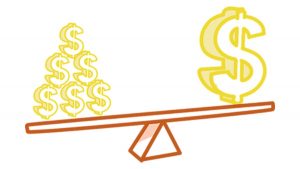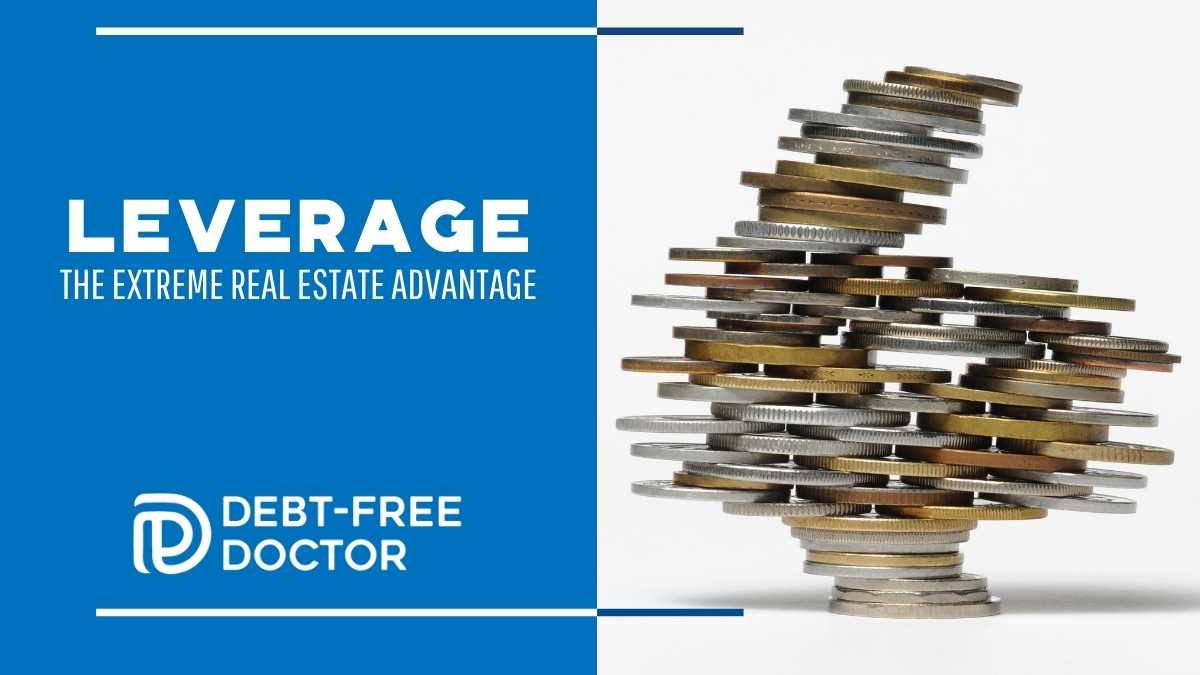What Is Leverage In Real Estate?
When I first think of the term “leverage“, nightmares of college physics class comes to mind.
I still don’t understand why we had to take some of the classes that were required such as physics and organic chemistry but hey, I’m glad those days are long gone.
During that time, I remember learning something about leverage and drawing a picture that resembled a see-saw with a heavy weight on one end and a light weight on the other.

Leverage is the ability to use something to move an object that would otherwise be too heavy.
Occasionally I’ve had to stick a piece of wood under our four-wheeler tire whenever it got stuck in the mud. This is an example of using leverage.
Greek philosopher Archimedes once said:
“Give me a lever long enough and a fulcrum on which to place it, and I shall move the world.”
I’m sure you probably already knew what leverage meant regarding moving obstacles, but what about using it in when it comes to real estate?
What Is Leverage In Real Estate?
If you’re a home owner, then you’re well aware of what it means to use leverage in real estate.
Leverage allowed you to borrow money to help finance your home in the form of a mortgage, possibly a doctor mortgage.
There are many reasons to invest in real estate, especially for the high-income professional.
Related Article: 5 Reasons You Should Be Investing In Apartments
Most millionaires and billionaires have real estate in their portfolio. Why? They know that a major advantage is something called financial leverage.
Leverage in real estate means buying property with debt instead of paying cash.
This allows you to buy a much larger asset and increase the potential return on your investment than you could if you had to pay 100% of the purchase price upfront.
A perfect example is something that I’ve invested in for several years, real estate syndications.
What Is a Real Estate Syndication?
A real estate syndication is nothing more than the pooling of funds from a group of investors in order to buy an investment property that’s more expensive than any of them could have afforded on their own.
So instead of buying several smaller properties individually, the group of people can come together and buy a larger one together.
For instance, let’s say I have $50,000 to invest.
If I was an active real estate investor, I’d have to do a handful of things first such as:
- find time to search the real estate market
- put it under contract
- perform the inspections
- run the numbers
- negotiate the purchase price
- obtain the loan with the best interest rate
- rent it out
- collect the rental income
- manage the property
Time consuming
I don’t know about you, but trying to manage a practice and still be a good husband and dad takes up a lot of time.
Being an active real estate investor for me at this point in my career is out of the question. Possibly when my kids eventually move out of the house but for now, not going to happen.
That’s why I chose to become a passive investor.
Investing in syndications allows real estate investors to put money into rental properties without having to do the work of finding or managing the property on their own.
So I can take that $50,000 and invest as a passive investor. My investment would be paired with someone else that puts up $50,000 and another that puts up $100,000 and on and on.
By pooling resources, we now have enough to buy not just a rental property, but something bigger, like an apartment building.
What’s great about being a passive investor is that you don’t have to do any of the day-to-day work of managing the property.
Example Of Using Leverage
Let’s take a look at how using leverage as an active investor would fair with a $100,000 investment.
When I first opened my practice, my original investment strategy was to invest in index funds as it was all I knew about saving for retirement.
If I put $100,000 into the Vanguard Total Stock Market Index Fund, then I can only purchase that amount as a shareholder.
On the other hand, I could use that same $100,000 and leverage it to buy an investment property that was a much higher valued asset.
In this example, I could use only $100,000 of my own money and purchase $400,000 worth of income-producing rental properties. I could then find a bank to lend me the other $300,000 at a fixed interest rate amortized over 25 or 30 years.
When the mortgage interest rate is lower than the property’s overall return, then you have what’s called positive leverage.
Let’s say that my $400,000 of rental property is generating a net cash flow of $36,000 each year without any debt financing, that’s a 9% cash-on-cash return on the investment ($36,000 / $400,000 = 0.09 or 9%).
In this example, I’ve found a lender that has allowed me to borrow the $300,000 at 4.5% interest, amortized over 30 years.
The monthly mortgage payment is $1,520.06 per month or $18,240.72 per year.
The gross cash flow of $36,000 gives me $17,759.28 in net cash flow. That increases the return from 9% to 17.8% ($17,759.28 / $100,000 = .1775 or 17.8%).
By using leverage, the annual cash-on-cash return increases by over 75% (17.8 – 9.0 = 8.8 / 9.0 = 0.977 or 98%). Power stuff!
And that my friends is the magic of using leverage in real estate.
Don’t Miss Any Updates. Each week I’ll send you advice on how to reach financial independence with passive income from real estate.
Sign up for my newsletterSelf-Directed IRA
One way that you can invest in real estate is by using a self-directed IRA. This is something that I chose to do last year.
I used money from a traditional IRA that I was no longer contributing to and opened a self-directed IRA.
This allowed me to invest in real estate with money that wasn’t earning near the amount that could be with real estate.
Here’s the article about my experience:
10 Pros and Cons of Self Directed IRA – Real Estate
Bottom Line
Taking advantage of leveraging real estate through financing a property can be a sound investment strategy to use other people’s money to increase profits.
Holding onto your leveraged property long-term may not only produce excellent returns, but monthly cash flow as well.


